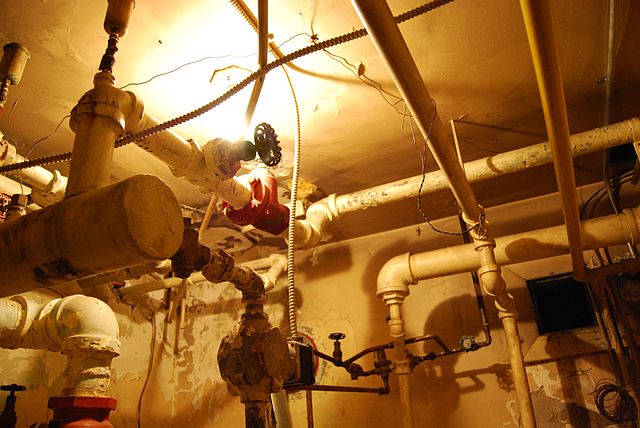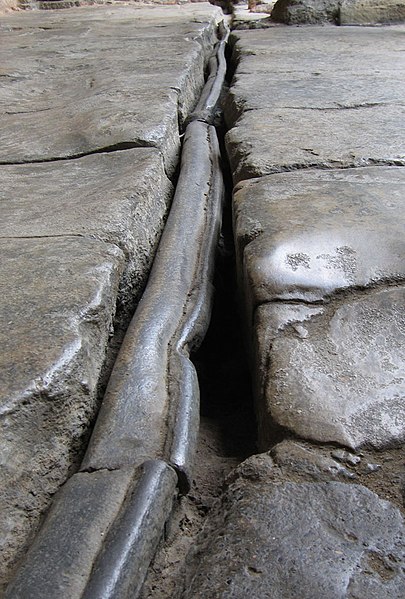A plumbing fixture is an exchangeable device which can be connected to a plumbing system to deliver and drain water.
A water outlet
This drain cover has a container underneath (which can be taken out for cleaning and revealing another container below) acting as a trap. Water inside the container forms a seal when the cover is in place. Positive air pressure will push the cover up, acting as an early warning device. The underside of the cover (centre image) is kept moist by condensation occurring and insects that go back up the drain pipe get stuck to the walls of the cover.
Sensor operated plumbing fixtures have fewer moving parts, and therefore outlast traditional manual flush fixtures. Additionally, they reduce water consumption by way of intelligent flushing schedules (fuzzy logic) that determines the quantity of each flush based on how many people are standing in line to use the fixture.
A wall-mounted shower sensor
Plumbing is any system that conveys fluids for a wide range of applications. Plumbing uses pipes, valves, plumbing fixtures, tanks, and other apparatuses to convey fluids. Heating and cooling (HVAC), waste removal, and potable water delivery are among the most common uses for plumbing, but it is not limited to these applications. The word derives from the Latin for lead, plumbum, as the first effective pipes used in the Roman era were lead pipes.
A complex arrangement of rigid steel piping and stop valves regulate flow to various parts of the building, with an evident preference for right-angle pipe bends and orthogonal pipe routes
Roman lead pipe with a folded seam, at the Roman Baths in Bath, England
Copper piping system in a building
A system of copper water tubes used in a radiator heating system








